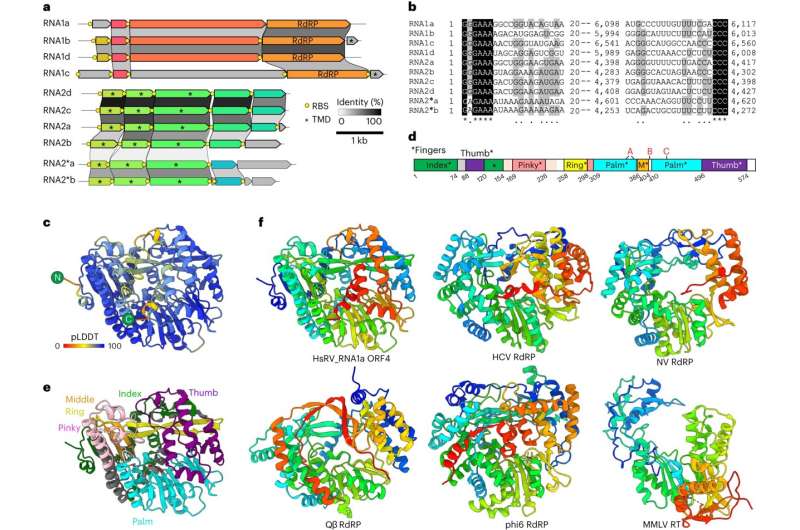Discovery of a third RNA virus lineage in extreme environments

There are numerous RNA virus species on Earth. However, their diversity and evolution as well as roles in the ecosystem remain unclear.
In a new study, using an original method, researchers have discovered a novel RNA viral genome from thermoacidophilic microbes (close to the last universal common ancestor of life) in the hot springs of Unzen and Kirishima fumaroles. This RNA virus was named hot spring RNA virus (HsRV) and was presumed to infect thermoacidophilic bacteria.
This study, in Nature Microbiology, shows that RNA viruses can inhabit high-temperature environments (70°C–80°C), where no RNA viruses have been observed before and where life is believed to have originated.
Furthermore, HsRV differs considerably from all other RNA viruses belonging to the two established RNA virus kingdoms, indicating the existence of a previously overlooked third RNA virus kingdom.
Future studies will attempt to culture host strains that harbor HsRV and elucidate the virological properties and ecology of HsRV. In addition, the same method used in this study will be applied to various microorganisms, animals, and plants to explore possible undiscovered RNA viruses.
More information: Syun-ichi Urayama et al, Double-stranded RNA sequencing reveals distinct riboviruses associated with thermoacidophilic bacteria from hot springs in Japan, Nature Microbiology (2024).
Journal information: Nature Microbiology
Provided by University of Tsukuba

















